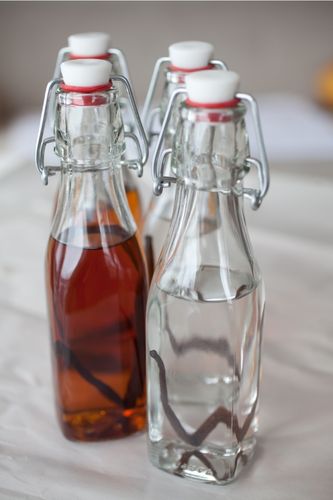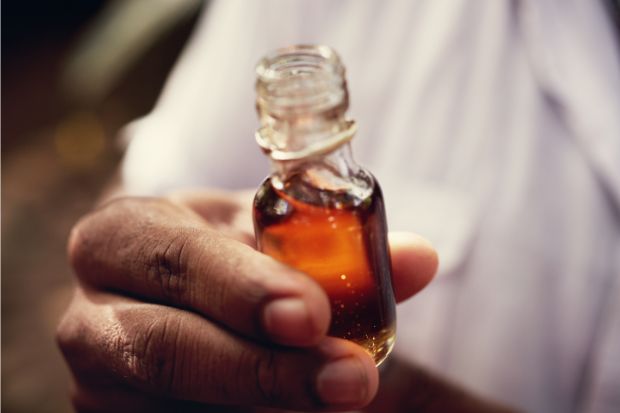Clear vanilla and real vanilla extract have distinctly different tastes, because clear vanilla extract is an artificial product made from vanillin, while most darker vanilla extracts are actually made from real vanilla beans.
Vanilla is the second-most expensive spice in the world, so it’s little surprise that there are dozens of versions of vanilla extract. Some of these are premium brands that only use organic, hand-cultivated vanilla beans, while others are nothing more than cheap alcohol and artificial flavor.
Clear Vanilla vs. Dark Vanilla

What many consumers think of as vanilla is actually vanilla extract. This product has traditionally been made by steeping a vanilla bean in a clear alcohol such as bourbon or vodka for about six months. As the bean steeps in the alcohol, it will naturally turn the liquid brown.
Clear vanilla, however, is actually an artificial flavoring. It’s made in a factory, and no actual vanilla bean comes into contact with the product, known as vanillin. The so-called “extract” made from vanillin has no color.
Unfortunately, a lot of people in the U.S. have been fed a diet of baked goods and other foods that primarily use vanillin instead of real vanilla. For this reason, a lot of people have no reason to suspect that there is a taste difference. All too often, companies that manufacture fake vanilla use food dyes to convince customers that they’re getting the real thing.
The result is that most people in America are only familiar with the taste of clear vanilla. Real vanilla extract is often described as a different level of vanilla. Think of the difference between artificial sweeteners and sugar. Fake flavorings might be good approximations, but they aren’t nearly as good as the real thing.
How Do I Know if I’m Buying Real Vanilla Extract?

There are several ways to tell if you’re actually buying a bottle of vanilla extract:
Price
Vanilla is the world’s second-most expensive spice, so consumers should be suspicious of any company offering vanilla extract at an absurdly low price. Real vanilla takes over a year to harvest and dry the beans, then at least another six months to steep in alcohol. The process requires a lot of human labor, driving up the price.
If you see supposed “real” vanilla being sold at the same price as imitation brands, be wary.
Labeling
Check the back of the bottle to learn what you’re buying.
While the front of the bottle may use words like “real” or “natural,” these terms have very little actual meaning. If a manufacturer is using artificial vanilla, they have to declare it under the ingredients list. Look for terms like “vanillin” or “artificial flavor” to indicate that the vanilla isn’t real.
Sediment
If actual vanilla beans were used in the making of your vanilla extract, there is usually a small amount of sediment or pieces of the vanilla bean left in the bottle. Don’t worry, these will only enhance the flavor of the vanilla.
Flavor
Of course, the best way to tell if you’re getting true vanilla is by the taste. Once you try real vanilla, you’ll notice the flavor difference almost immediately.
To try this, mix half a teaspoon of real vanilla extract into a drink such as coffee, tea, or lemonade. Do the same with a bottle of artificial vanilla. You’ll notice the stronger and more complex flavor right away.
Run similar experiments with your favorite baked goods. Breads and cookies are some of the best foods for noticing the flavor of real vanilla.
Once you’ve experienced what real vanilla tastes like, you’ll want to start using it in savory dishes too. Use it in sauces for chicken and beef, as well as in salad dressings.
